This turtle species resembles a piece of tree bark with its spiky scales and always appears cheerful. They are known as mata mata turtles, with an exceptional ability to camouflage.
As one of the largest freshwater turtle species (their shells can grow up to nearly 45 cm in length and weigh around 17 kg), the mata mata turtle is a rather peculiar-looking animal, at least by human standards.
It has an asymmetrical large head and a long, thick neck adorned with numerous warts and ridges on its face, referred to as “tubercles.” On either side of its long snout are coin-shaped horn structures, and its wide mouth gives the creature the appearance of always smiling.
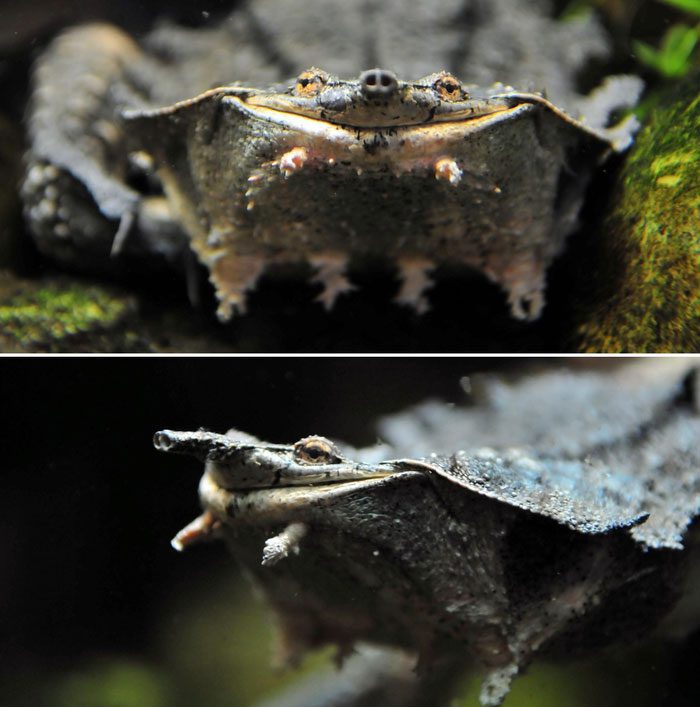
The mata mata turtle lives in northern South America, including the Orinoco and Amazon river basins. They are most commonly found in Brazil, Guyana, and Peru. In turbid waters of the Amazon and Orinoco rivers, they inhabit northern Bolivia, eastern Peru, Ecuador, eastern Colombia, Venezuela, Guyana, as well as central and northern Brazil. Additionally, their presence has been noted in Bolivia, Peru, Ecuador, Venezuela, Colombia, Brazil, and even on the island of Trinidad.
However, while the mata mata turtle may seem unattractive to some, its appearance is actually an adaptation to its surroundings, providing specific advantages.
Found in the Amazon and Orinoco river basins in South America, this turtle is a nocturnal carnivore, preferring to hunt small fish and various aquatic invertebrates during the night.
Despite its large shell, it can also fall prey to predators such as crocodiles.
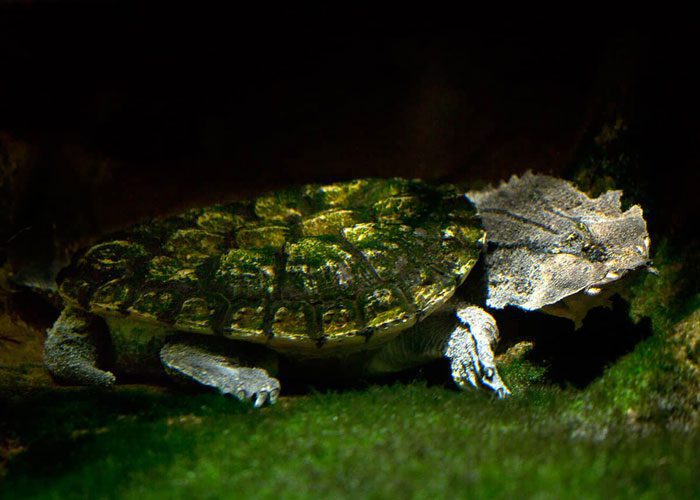
The mata mata turtle is a sedentary species with a triangular flat head. Its snout is tubular and has a horned portion. They resemble a dead leaf and have a pale yellow color. Because their shell looks like a decaying leaf, they are also known as dead leaf turtles. When threatened, they can retract their head, tail, and limbs into their shell.
Although the ridges, warts, and patches of skin covering their body may make them appear unattractive to humans, these skin layers actually serve important functions. One of these is camouflage, making them resemble the decayed and rotten wood of the swamp—things that are relatively common and inedible in the river basin where the mata mata turtles live.
The skin and shell of this turtle also create a surface for algae and weeds to grow, helping them to blend in as an unappealing rock or piece of wood to potential predators.
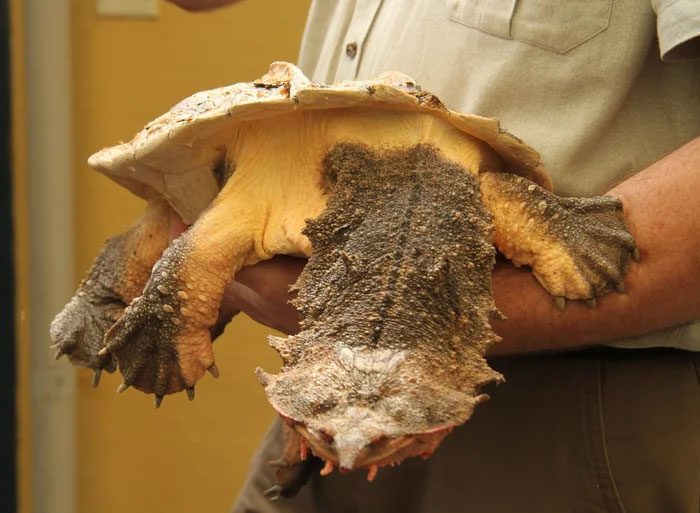
Similar to other pet turtle species, mata mata turtles are large, typically growing to 43 to 45 cm in size. The largest recorded specimen reached 61 cm. Female turtles are usually larger than males. Like other mature turtles, males have longer and wider tails than females. Their bodies do not appear overly robust, somewhat resembling North American alligator turtles. Strangely, they have whisker-like appendages around their necks.
Additionally, the wart-like structures on the faces of these turtles function similarly to a cat’s whiskers: they inform the turtle about water currents and movements, which is useful for both hunting and avoiding larger dangers such as crocodiles.
Mata mata turtles have a rather peculiar hunting method. They have been observed cornering fish, trapping them so that the fish remain still and await their demise.
Once they have cornered their prey, the mata mata turtle extends its head and opens its mouth as wide as possible. It then creates a low-pressure vacuum to suck the prey into its mouth, a process known as food suction. When the turtle closes its mouth, the water is gradually expelled, and the fish is swallowed whole (due to the unique structure of its mouth, this turtle cannot chew its prey).
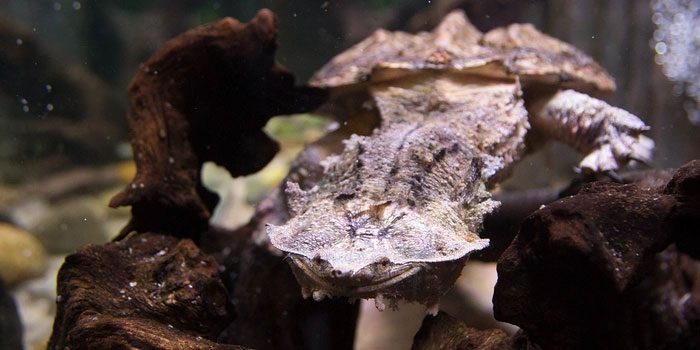
This species typically operates in shallow waters, and its snout can breathe while submerged. Mata mata turtles are not apex predators in their habitat, which means they can also become prey for many other species.
According to those who have kept mata mata turtles, they are quite intelligent. Observations have shown that captive mata mata turtles utilize the water flow from pumps to pin down prey in aquariums.
Mata mata turtles are currently not listed as endangered; however, their unique characteristics make them a common target for pet hunters, and they are often kept in aquariums as pets.
But because they are relatively difficult to care for as pets and often experience stress, they frequently encounter health problems when kept in captivity.
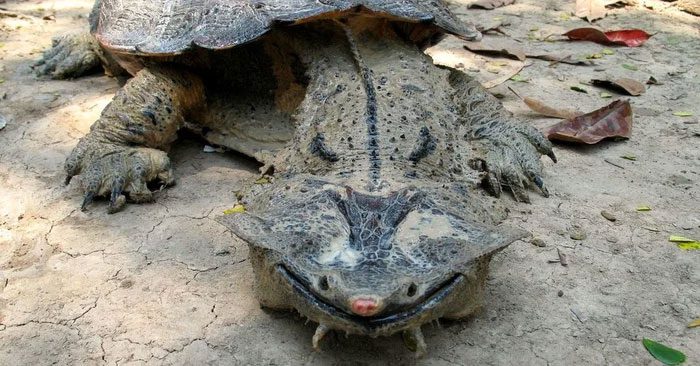
Mata mata turtles typically live in ponds and move very slowly. This species is highly aquatic and rarely leaves the water. Females will begin nesting between October and December, laying spherical eggs with a diameter of about 35 mm, which will hatch after approximately 200 days of incubation.


















































